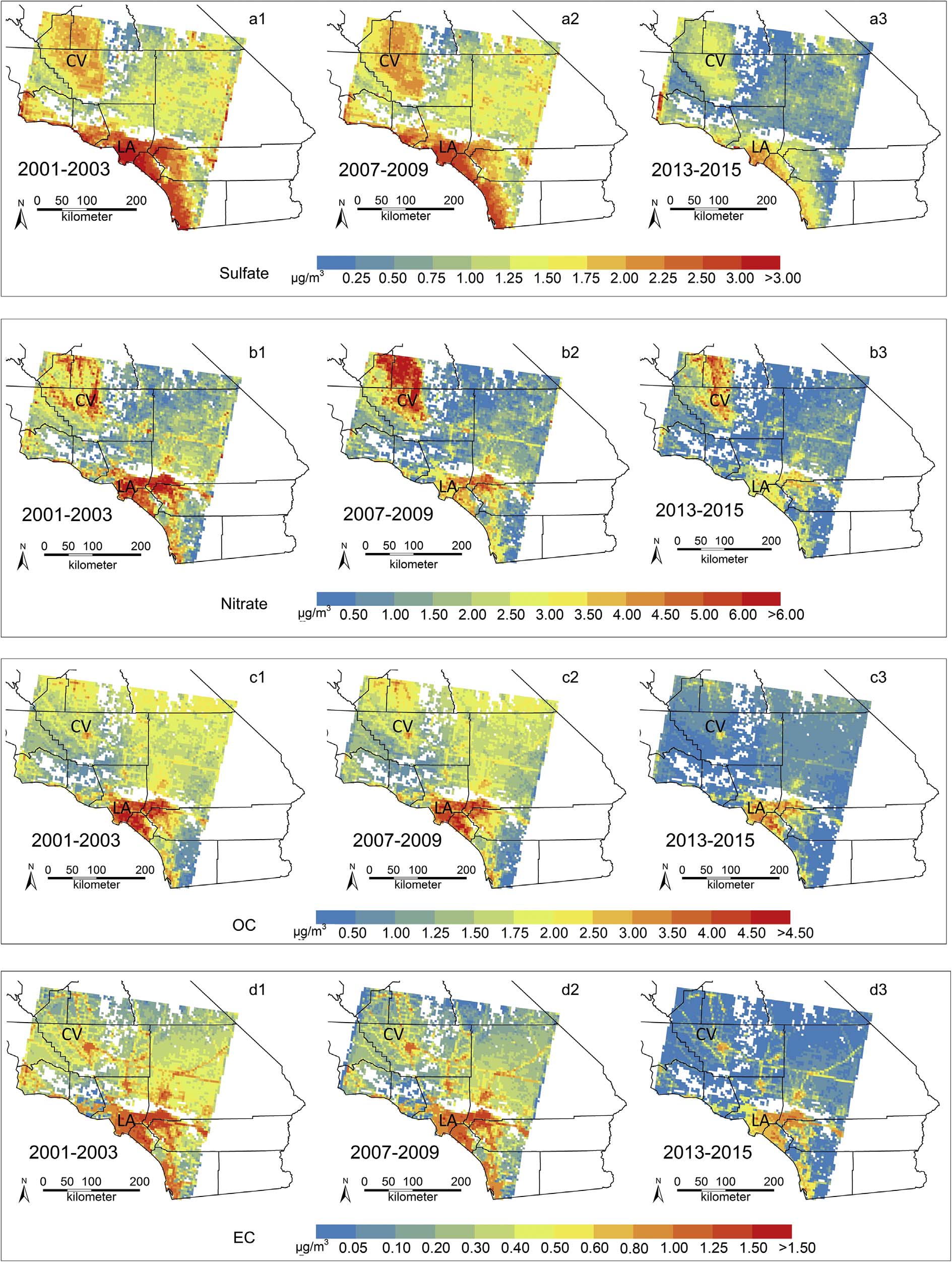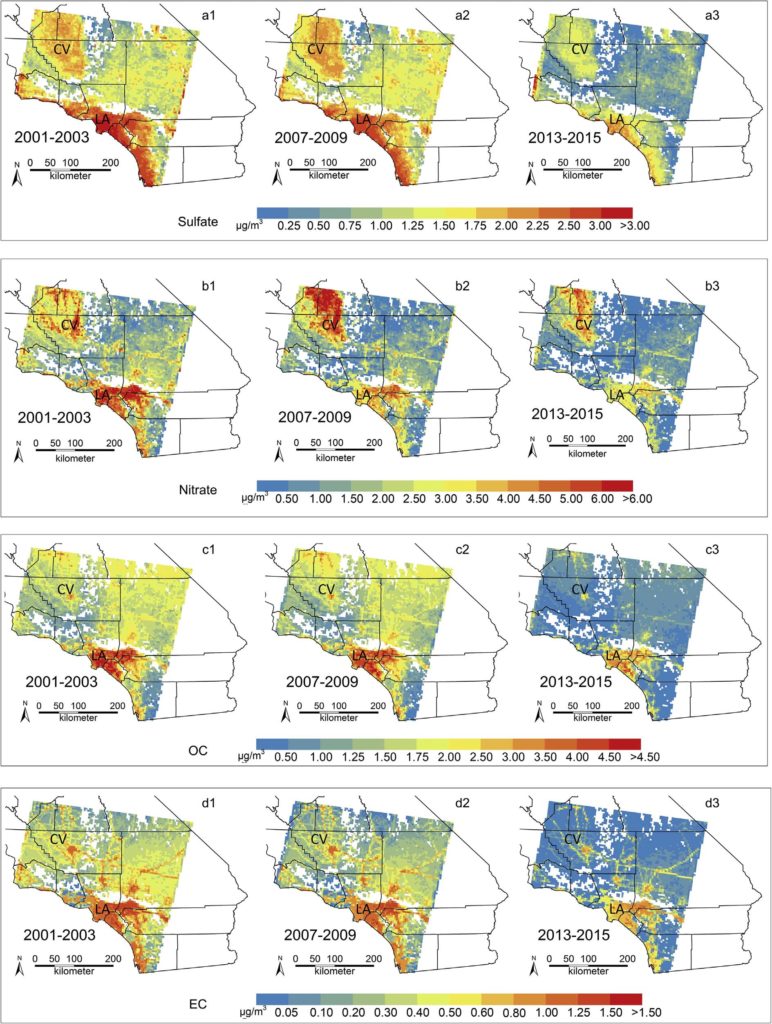Regarding sulfates, nitrates, organic and elemental carbon in California air, there is good news.
According to information in a Jun. 5, 2018 California Environmental Protection Agency Air Resources Board (ARB) news release, those substances in Golden State air are becoming fewer and farther between.
In the “NASA satellite helps collect 15 years of Southern California air pollution data; results show air pollution controls working: Satellite remote sensing technology informs air quality trends miles from existing urban regulatory monitors in rural, disadvantaged communities” news release, the ARB reports: “Scientists from Emory University, NASA’s Jet Propulsion Laboratory and the California Air Resources Board worked together to analyze satellite data to determine the 15-year trend of fine particle pollution. This type of pollution is also known as PM2.5, referring to particulate matter that is less than 2.5 microns in diameter, or about 3/100ths the diameter of a human hair. PM2.5 is especially burdensome in California and accounts for the greatest percentage of health impacts attributable to air pollution.”
So, what is at the heart of the positive difference in California air being made?
“A new scientific study using satellite technology provides clear evidence that California’s tough clean air programs are working to reduce emissions of fine particle pollution throughout the state,” the ARB submitted.
According to information spelled out in the release, air quality controls, enforcement, planning and regulations is what is responsible for the improvement.
The ARB, meanwhile, went on to state that: “Satellite data was able to identify locations that could be directly linked to programs that reduced measured pollutants.”
Those programs as documented in the release in question are as follows:
- Coastal Cities: Concentrations of sulfates in coastal cities decreased significantly, the result of CARB’s 2006 ultra-low sulfur diesel fuel standard, 2007 Drayage Truck Rule, and 2008 Ocean-Going Vessel Fuel Regulation.
- Transportation Corridors in Los Angeles: Concentrations of nitrates in the Los Angeles area decreased significantly, most prominently near transportation corridors, pointing to the success of CARB’s various mobile source NOx [oxides of nitrogen] control programs.
- Urban and Suburban Southern California: Concentrations of organic carbon (OC) and elemental carbon (EC) decreased significantly in both the urban and suburban areas of Southern California. This is the result of CARB’s programs that clean up cars and trucks, along with other programs including wood burning rules implemented by air districts.
The ARB in the release was resolute: “This is the first study to evaluate long-term changes in major PM2.5 components using spatially comprehensive satellite data. The data were collected using a unique type of instrument – the Multi-angle Imaging SpectroRadiometer (MISR) – on NASA’s Terra satellite, which complements air quality data collected at existing air quality monitors on the ground.”
Good this news definitely is. Though, this information does not come as a complete surprise as trending negatively and concomitantly also have been in-state greenhouse gas emissions.
For more related to the PM 2.5 satellite data collection and more, see: “NASA satellite helps collect 15 years of Southern California air pollution data; results show air pollution controls working” news release here.
Image above: California Environmental Protection Agency Air Resources Board
– Alan Kandel

